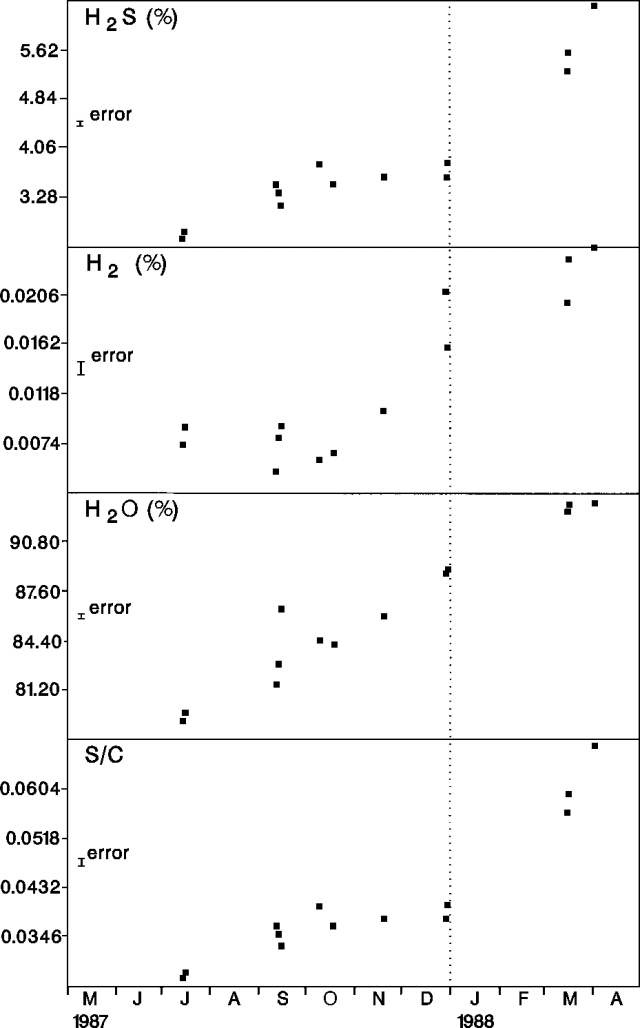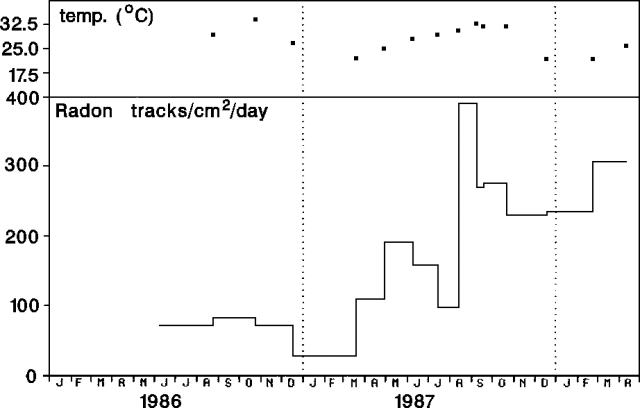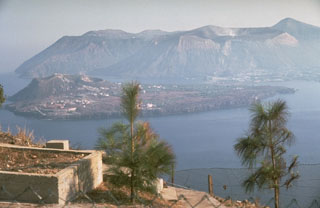Report on Vulcano (Italy) — May 1988
Scientific Event Alert Network Bulletin, vol. 13, no. 5 (May 1988)
Managing Editor: Lindsay McClelland.
Vulcano (Italy) Higher fumarole temperatures and changing gas chemistry
Please cite this report as:
Global Volcanism Program, 1988. Report on Vulcano (Italy) (McClelland, L., ed.). Scientific Event Alert Network Bulletin, 13:5. Smithsonian Institution. https://doi.org/10.5479/si.GVP.SEAN198805-211050
Vulcano
Italy
38.404°N, 14.962°E; summit elev. 500 m
All times are local (unless otherwise noted)
OV has regularly collected data on fumarole temperatures, gas chemistry, and radon emission at Vulcano. Since September 1987, the temperature of a fumarole (F5) on the crater rim has increased from 310 to 335°C. In December, a new vent near F5 had a temperature of 370°C. Measurements since then (through May 1988) do not show continued temperature increases, although values reached 415° near the bottom of the crater on 1 April. Chemical analyses of fumarolic fluids show clear variations in several gases with time. H2S, H2, H2O vapor, and the S/C ratio strongly increased (figure 3), while Cl and CO2 decreased significantly. Equilibrium temperatures calculated from the gas/water shift reaction (CO + H2O <-> CO2 + H2) do not show any variation with an average temperature of ~ 400°C. Measurements of water wells also show an increase in radon activity (figure 4).
 |
Figure 3. Percentages of H2S, H2, and H2O; and S/C ratio in gases from fumarole F5 on Vulcano's crater rim, July 1987-April 1988. |
 |
Figure 4. Temperature (top), and radon tracks/cm2/day (bottom), at a well (Pozzo Bambara) near Vulcano, 8 June 1986-11 April 1988. |
OV geologists believe that the variations could be explained by two main hypotheses: 1) An increase in permeability of the shallow system because of more fracturing (13:02); 2) An increase in heat migration from deeper to shallower reservoirs, buffered by water as indicated by the higher water vapor content of the collected gases.
On 21 April, a landslide occurred on the NE flank of the island. Visual estimates yield a total avalanche volume of <50,000 m3. OV geologists note that a very limited phreatic explosion cannot be excluded as a cause for the landslide.
Geological Summary. The word volcano is derived from Vulcano stratovolcano in Italy's Aeolian Islands. Vulcano was constructed during six stages over the past 136,000 years. Two overlapping calderas, the 2.5-km-wide Caldera del Piano on the SE and the 4-km-wide Caldera della Fossa on the NW, were formed at about 100,000 and 24,000-15,000 years ago, respectively, and volcanism has migrated north over time. La Fossa cone, active throughout the Holocene and the location of most historical eruptions, occupies the 3-km-wide Caldera della Fossa at the NW end of the elongated 3 x 7 km island. The Vulcanello lava platform is a low, roughly circular peninsula on the northern tip of Vulcano that was formed as an island beginning more than 2,000 years ago and was connected to the main island in about 1550 CE. Vulcanello is capped by three pyroclastic cones and was active intermittently until the 16th century. Explosive activity took place at the Fossa cone from 1898 to 1900.
Information Contacts: D. Tedesco, J.-P. Toutain, L. Bottiglieri, R. Pece, and G. Luongo, OV.

